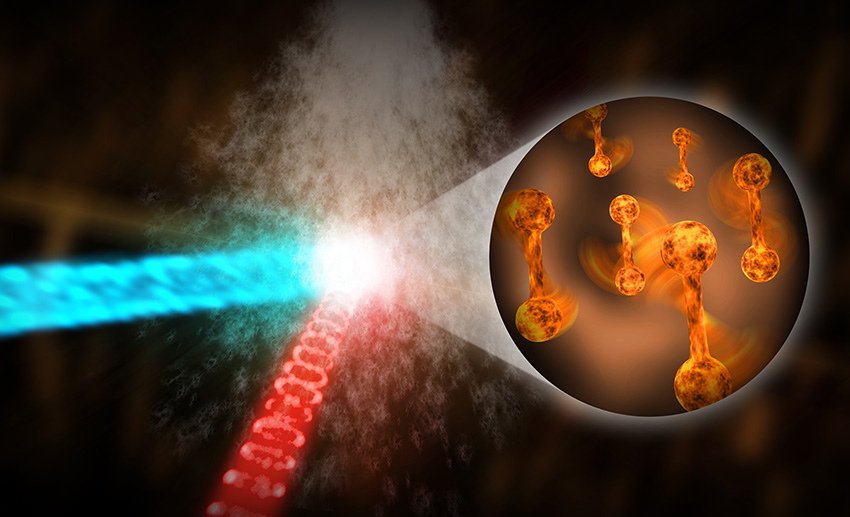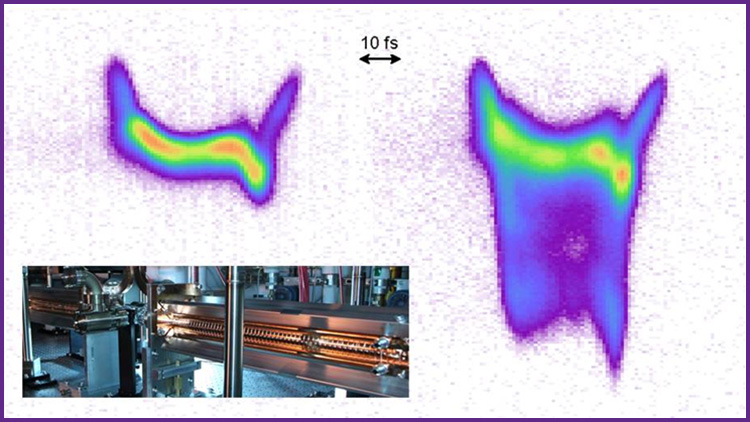
Ultrafast Molecular Manipulations
Researchers trigger ultrafast response to see how molecules redistribute energy in quadrillionths of a second.

Researchers trigger ultrafast response to see how molecules redistribute energy in quadrillionths of a second.

Seeding x-ray free electron lasers with customized electron beams produces incredibly stable laser pulses that could enable new scientific discoveries.

Delta undulator provides researchers with a new tool to probe chiral materials with widespread utility in agriculture and pharmaceuticals.

Previously unobserved scattering shows unexpected sensitivity to bound electrons, providing new insights into x-ray interactions with matter and opening the door to new probes of matter.

Computer algorithm recovers histories and dynamics on timescales much faster than uncertainties inherent in experimental data.

The world’s fastest images of nitrogen molecules rotating in a gas were captured using electron diffraction.

First-of-its-kind measurements provide insights on reactions that could one day turn sunlight and water into fuels.

Pairs of precisely tuned X-ray pulses uncover ultrafast processes and previously unmapped structures.

X-ray pulses from the Linac Coherent Light Source probe the molecular dynamics of photoexcitation.

Stroboscopic x-ray pulses scatter from a vibrating crystal and reveal how energy moves.

Researchers have developed a powerful new diagnostic tool for the Linac Coherent Light Source (LCLS) with femtosecond resolution.

A novel tool to determine the structure of difficult to crystallize proteins.